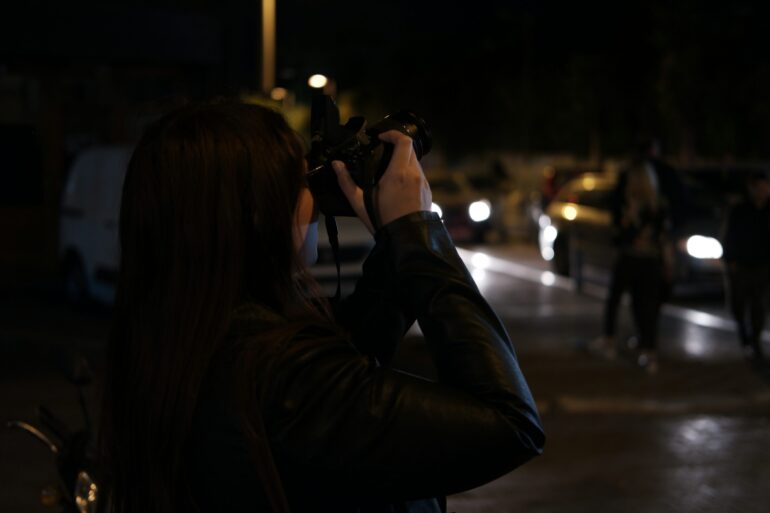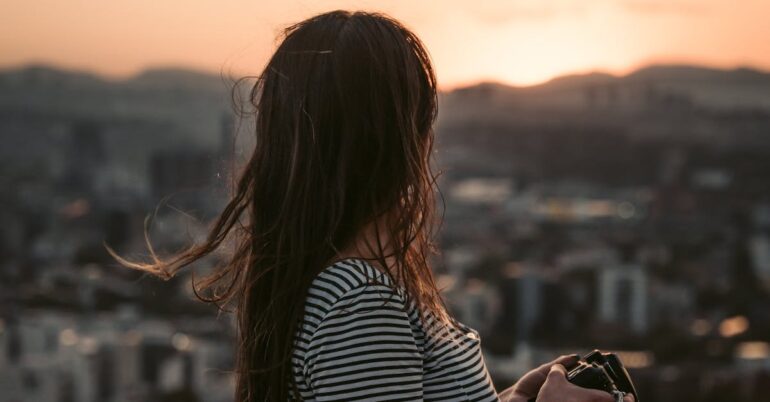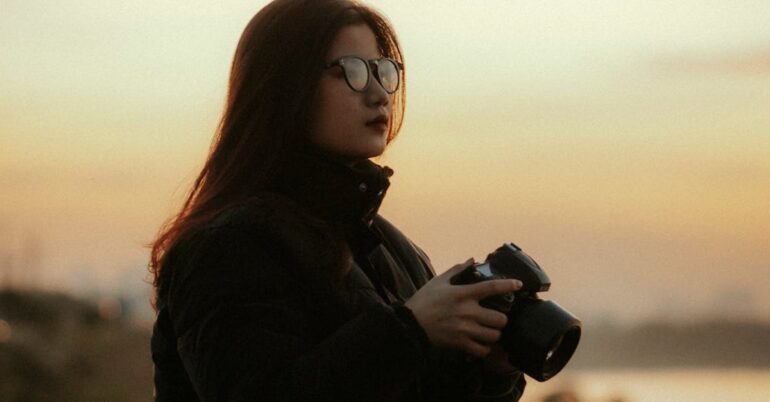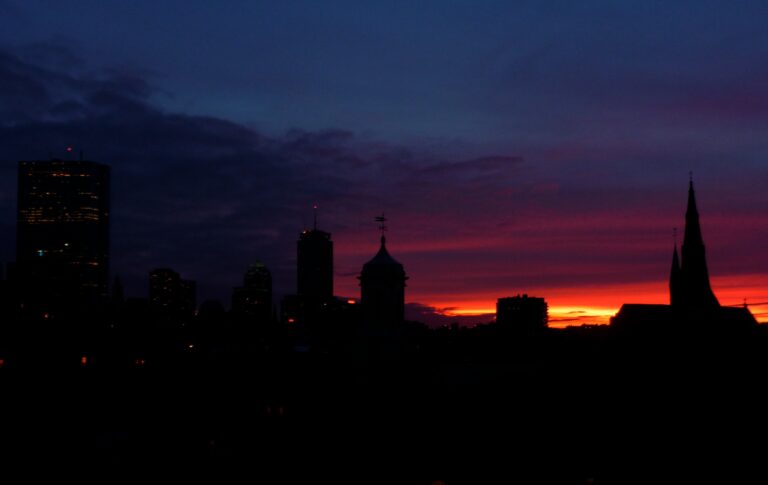When the sun dips below the skyline and the rush-hour crowd fades into a hum, cities don’t fall asleep—they shift.
As a woman who travels often, I’ve found that the most honest version of any city doesn’t show up in the tourist brochures or the guided tours.
It comes alive at night. After sunset, the same streets you walked earlier begin to whisper different stories—some bold, some quiet, and some that’ll stay with you long after you’ve left.
If you’ve ever wondered what really happens to a city when darkness takes over, this article is your open window. Welcome to the kind of photo diary that isn’t about filters or Instagram—it’s about how cities truly feel after dark.
Key Highlights
- Cities reveal a different emotional rhythm after sunset
- Street photography becomes a powerful storytelling tool
- Hidden corners, unexpected people, and vibrant nightlife emerge
- Women experience cities differently at night—both freedom and caution
- The intimate side of a city often hides in its shadows
- Local companionship services are part of many after-dark realities
The Shift in Mood: Cities Breathe Differently After Dark

It’s hard to explain unless you’ve felt it for yourself. As daylight fades, the colors get deeper, the shadows longer, and the sounds more distinct.
The noise of commerce is replaced by laughter from balconies, neon signs start flickering to life, and couples wander hand in hand where suits used to rush.
The vibe slows down and sharpens all at once. It’s no longer about being seen—it’s about watching. As a male traveler, I’ve found that night is when I notice the things I usually rush past in daylight.
A tired man lighting his cigarette on a corner. A flower vendor packing up unsold roses.
A teenager silently practicing dance moves in front of a shop window.
This is when I pull out my camera—not for polished photos, but for honesty.
Unfiltered Intimacy: Night Photography as a Mirror
After sunset, lighting becomes a storytelling tool in itself. Streetlights, car reflections, the occasional flicker of a distant TV in someone’s apartment—all these help you photograph not just what’s in front of you, but what you feel when you’re standing there.
That’s when I started creating a series I call Photo Diaries. It’s less about taking beautiful photos and more about capturing emotional honesty—what people are like when they’re not performing.
In cities like Delhi, this contrast between day and night can be especially vivid. After hours, the city becomes more relaxed yet more intense—clubs light up, chai stalls become social hubs, and corners you didn’t even notice in the afternoon become focal points of energy or, sometimes, solitude.
Nightlife in Delhi has layers: from rooftop bars to quiet walks in Lutyens’ Delhi, to less spoken-of but undeniably present experiences. One part of that complex nighttime culture includes private companionship services.
Services such as Delhi female escorts are often discretely part of the fabric of urban nightlife—not always visible, but undeniably there.
For some travelers, particularly solo ones, these interactions become a moment of connection or curiosity within a city that never truly sleeps.
The Female Gaze: Seeing and Being Seen at Night

Walking alone as a woman after dark comes with a double lens—you’re observing, but you’re also hyper-aware of being observed. This duality shows up in every night photo I take. There’s always a question in the frame: Am I documenting, or am I being documented too?
That awareness changes the way I shoot. I avoid voyeurism. I seek presence. I try to show what it feels like to walk through a quiet residential lane at 11 PM, or what it means when a group of women laugh loudly at a roadside stall, defying expectations just by being there.
If you’re a woman with a camera, you’ll know what I mean. Night isn’t just darker—it’s deeper. You carry the weight of both curiosity and caution.
Late-Night Characters: Who You Really Meet
Forget glossy travel guides—real characters emerge at night. These are not the people who guide tours or work in galleries.
These are the gig workers, the partygoers, the late-shift baristas, the drifters, the women in heels disappearing into quiet doors.
One of my favorite photo diary entries came from Leicester. A quiet city by day, but at night, it hums with unexpected charm.
The diversity of its after-hours population—from Afro-Caribbean food trucks to South Asian wedding celebrations—makes it a city that photographs like a novel.
And yes, the companionship industry exists here too, though far more private and reserved than in big metros. It’s not uncommon for people to seek local experience in the most intimate ways.
For those drawn to discreet moments or meaningful companionship during their travels, services like Sduko Leicester escorts may represent a part of that connection—a detail that might not make it into travel blogs, but one that colors the city’s nighttime palette nonetheless.
Hidden Corners and Quiet Stories
If you want to see the real side of a city, go where it’s quietest after 9 PM. I’m talking residential balconies, dim-lit bookstores that stay open late, or alleyways where old men still play cards. These places don’t show up on Google Maps.
I once stumbled upon a jazz quartet playing in a half-empty rooftop in Budapest—just because I followed the sound of a saxophone. Another night in Istanbul, I found a small café that only serves desserts after midnight. These moments don’t require a language—just openness and timing.
These are the photos that stay with me—not because they’re technically perfect, but because they remind me of the mood. And for every one of them, there’s a woman behind the camera asking: What would I never see if I’d gone to bed early?
Making the Most of Your Own Photo Diary

So how do you start capturing what you really see in a city after sunset? Here are a few things I’ve learned:
- Use your ears before your eyes. Follow music, laughter, quiet—even silence.
- Don’t chase landmarks. The soul of the city lives in overlooked spaces.
- Stay present. You’re not on a mission to capture beauty—you’re documenting mood.
- Respect boundaries. Ask before photographing people. Moments are more powerful than faces.
- Don’t always shoot. Sometimes the best photo is the one you didn’t take, but felt.
Final Thoughts: Cities Tell Secrets at Night
If you really want to understand a city, you have to give it the dignity of night. It’s easy to admire architecture in daylight. It’s harder—but more revealing—to feel a city’s pulse in its quiet hours.
After sunset, streetlights don’t just illuminate—they dramatize. Music sounds louder, shadows feel longer, and human moments feel more intimate.
These are the moments that make my photo diaries less about pictures and more about presence.
So the next time you find yourself in a new city, don’t rush to your hotel after dinner. Grab your camera—or just your curiosity—and go see what the city wants to show you after hours. It might not be glamorous. But it will be real.

